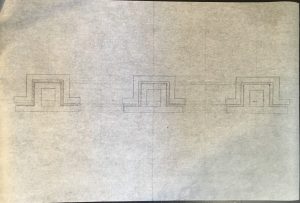Masonry is an appealing material due to its classifications such as resistance to fire, some are water-resistant, weathering, insulation, and erodes slowly over time. Masonry is appealing due to its characteristics such as the simplicity of concrete or creating a feeling of heaviness like a huge stone. Masonry can have an effect on the structure which makes masonry appealing as well.
Author: Keren Lucero Arita
We can appreciate different materials and their different aspects that can help us determine which material is best for resisting force. Such as steel that is very good at tension and it is fire resistance although it is very expensive. The timber on the other side is a combustible unless it is heavy timber. Concrete is not combustible but should be reinforced because of little tension force. This helps us determine what’s best for structural systems.
The relationship between materials, structure, and design is depending on the design, we should know what structural element the design consists of and what material will best suit the structural element. I will implement this relationship in my design studio by understanding what materials are best that adapt to the location or what structural element could best reflect concepts given in our design studios. This will help us come up with an efficient design with the knowledge of materials and structural elements.
It is important to understand the way exterior walls are put together to understand how exterior walls will overcome to different conditions to protect the external spaces and drain out water that comes into the building. There is much complexity with many components in order to maintain a space that is habitable and comfort to those using the space. For example, the window has many components such as sealant and double insulated windows in order to keep out moisture and maintain temperatures.
Stone is a very durable material that many constructors consider using to build structures that would last a lifetime. Although it is important that architects should understand the qualities and capacities of the different types of stone there is to know how to use stone in their works to create durable structures. Granite for example is a type of stone that is impervious and compression resistant , which is less absorbent to water. Granite in this case, is very good for floors, counter top, or even the bottom level of a building, which is more likely to be exposed to water, snow, and floods also strong enough to hold up the gravitational force that is upon the building.
What I’ve learned so far in both reading #1 and #2 is the importance to have the basic requirements of a successful building. I’ve learned that we should consider some concepts such as scale, proportion, space, light, to make a building as a whole. I’ve also learned the life safety code which should become the first thing we should have in mind when designing a building. Overall the class given today was very successful and helpful. Professor Montgomery demonstrated how to draw stairs plan and the importance of measurements of the stairs (7-eleven).
Reflection 1: After reading section #1 the way I perceive architecture changed, architecture does not only design a physical structure but creates space as well. Architecture is combination of many experts works, such as mechanical engineers and electrician engineers, to make a place habitable and safe.
Reflection 2: To know that you have learned from reading is by understanding what the section of the reading was about and any questions you had before reading was answered. To ensure you learned the most important concept of the reading is to revise your concept map and reread the reading to reassure that you have successfully learned from the reading.
What I learned about concept map is how one main idea can branch out to smaller ideas to see how they all connect to each other. This will be very helpful for me in taking ideas when reading portions of a text and deconstruct what the text is trying to point out and find further information behind the text. The concept map can also be used to connect our background knowledge and connect to the reading to make more intensive connections and relations to texts. It is more of dissecting a reading to find main points, ideas, and objectives.



